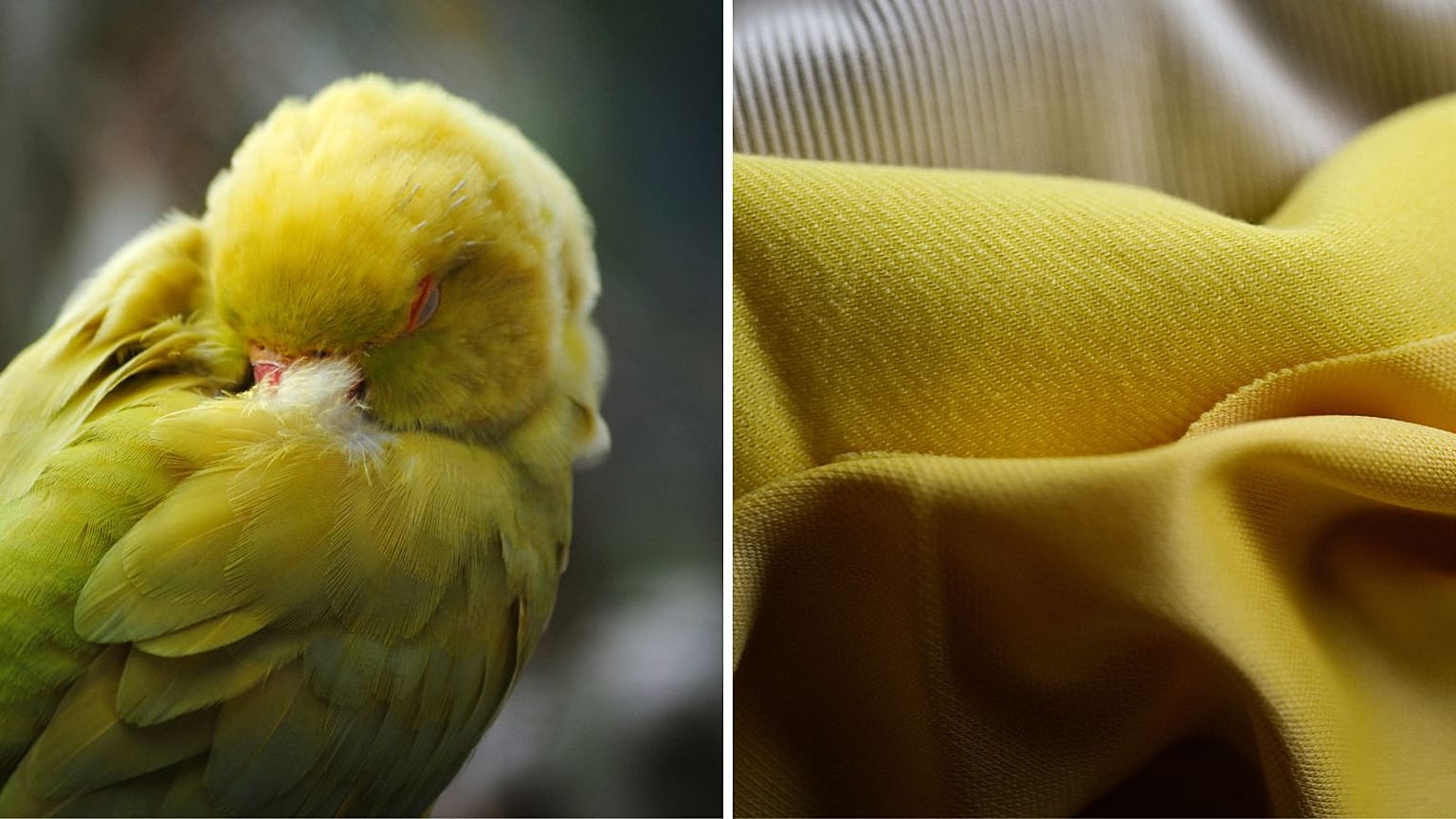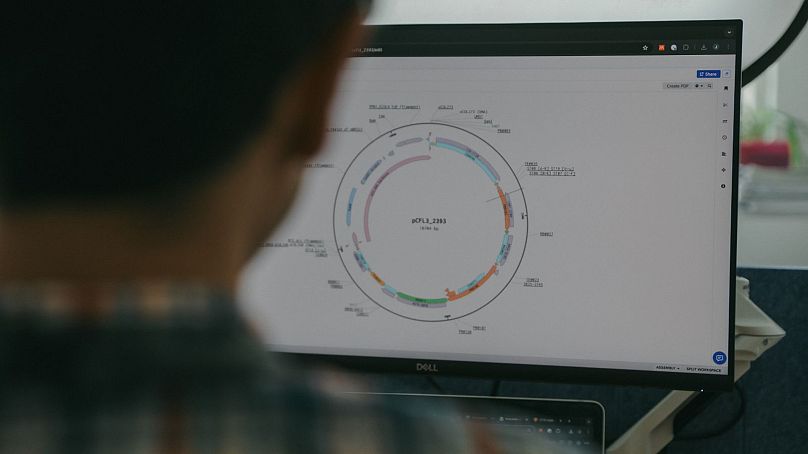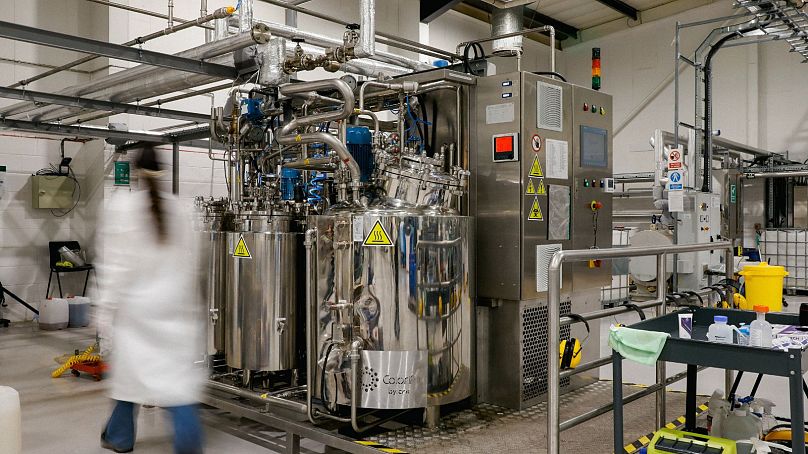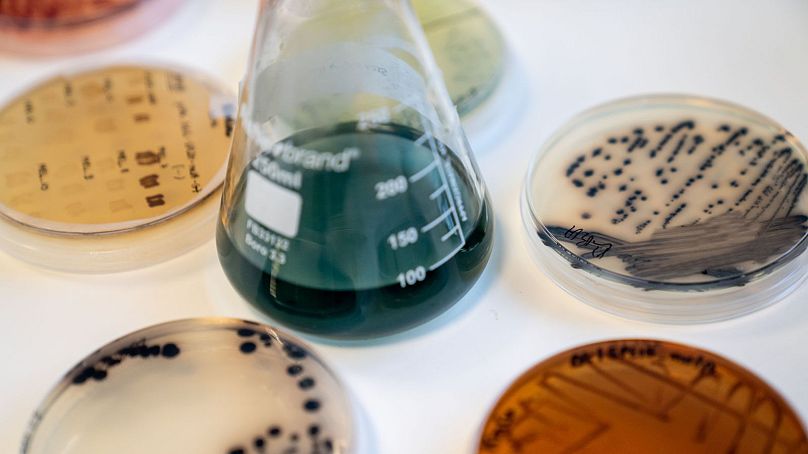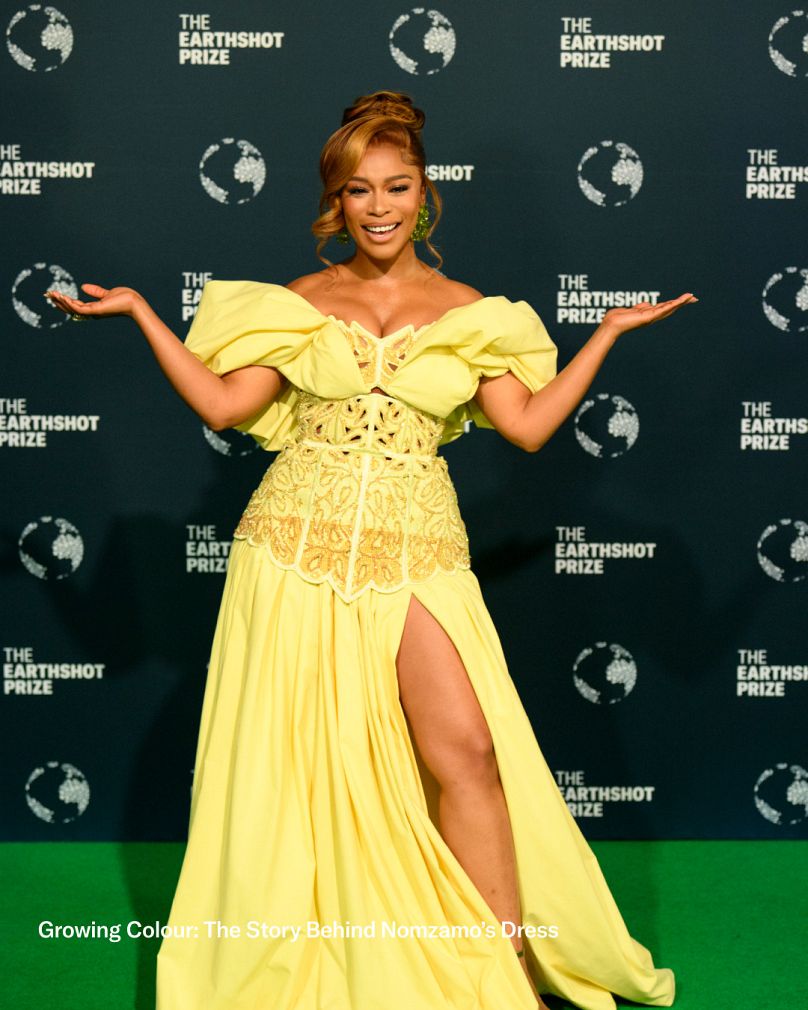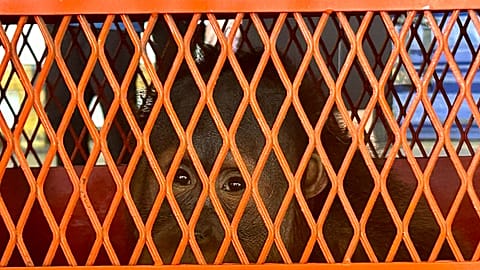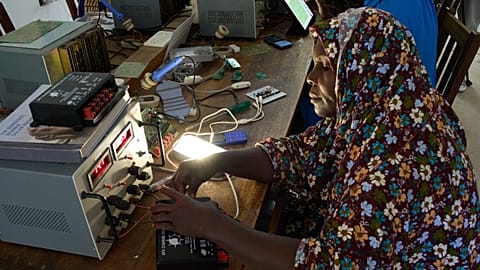Colorifix successfully dyed greens and oranges this year, adding to a palette of pigments from nature.
From the vivid red of a parrot’s feather to the dreamy blues and purples of Indigo plants, nature is a riot of colour. It has a spectrum to satisfy even the most fashion-forward of humans, so what if there were a way to naturally copy all of these hues?
That’s precisely what UK-based company Colorifix is working on: a fabric-dyeing process that uses the DNA codes for colours found in nature and teaches microbes to recreate them.
Founders Orr Yarkoni and Jim Ajioka were motivated by a research trip to Nepal in 2013, where they saw the toxic impact of chemically synthesised dyes on Kathmandu's rivers.
A decade later, Colorfix won recognition as a 2023 finalist for The Earthshot Prize - the global environmental award created by Britain’s Prince William.
We caught up with the company to find out more about the waste-cutting solution and what they’ve achieved since stepping into the global spotlight.
How do you ‘grow colour’ from nature?
Before the 19th century, fabric dyes were derived from natural plants and crops, and colourful clothing was considered a luxury. Colorifix is “bringing the fashion industry back to its roots”, in the words of CEO Yarkoni - but with a 21st century set of tools to unlock new pigments.
It begins by identifying an interesting colour created naturally by an animal, plant or microbe. By searching public databases, scientists find the ‘instructions’ for making that colour in the organism’s DNA code.
They then insert that code into bioengineered microbes like yeast, which are fed with sugar and nitrogen in bioreactors, similar to the way beer is brewed. Over time, these “microscopic colour factories” can create hundreds to thousands of litres of dye.
Finally, the contents of the fermentor are pumped into standard dye machines along with the yarn, fabric, or garment to be dyed.
Scaling up sustainable dyeing
“Support from The Earthshot Prize not only validates the impact of our solution but also connects us with the network needed for this crucial next phase,” says Andreas Andren, head of business development at Colorifix.
Finalists - there are 15 each year, across five categories - join the Prize’s 12-month accelerator programme, which includes connections to investors and help to overcome hurdles.
“Biotech is great, but overall expensive to run and scale,” explains Andren. “Part of the innovation we had to put into play was hardware to make biotechnology scaling competitive with commodity chemical manufacturing.
“Having to solve that problem on top of developing our core technology - the actual dyeing - was definitely the biggest challenge.”
How do you patent a ‘natural’ solution?
Colorfix’s solution makes for an interesting intellectual property (IP) case. Patenting organisms that have been recreated using DNA technology is tricky, so the company has instead patented its process of producing, depositing and fixing dye on fabric.
“To reap all the benefits of our technology, such as flexibility and cost parity, a dye house will need to install our proprietary bioreactors on-site,” Andren says.
Is the company coming up against incumbents in the industry? “We are getting more attention from synthetic chemical manufacturers,” he says.
“Some good, some not so good; but the fact that they are starting to pay attention is definitely a sign we are on the right track.”
How are sustainable dyes cleaning up the fashion industry?
Colorifix has operational capacity in Europe and South America - spread out across several manufacturers - and is aiming to be operational in South Asia within a year.
It has partnered with fashion brands like Pangaia and Vollebak to bring products dyed with its technology to market and start increasing demand for sustainable dyes throughout the supply chain.
There are other “big names in the pipeline,” says Andren - but the company is keeping its cards close to its chest for now. The same goes for the new colours it is cooking up.
However, he reveals, they successfully dyed greens and oranges during the first part of the year. And the team are extending their application to new materials, including Spiber, made of spider silk protein, and Circulose, an alternative cellulose pulp.
New colours will join Colorifix’s primary palette of three pigments: one detected in Indigo plants; another, Blushing Rose, made by underwater bacteria; and a third bacteria-born pigment found in soil and deep-sea sediments, named Sunlit Sand.
Colouring our clothes with these natural dyes would represent huge progress for an industry that is currently polluting and colouring nature - like Tanzania’s Msimbazi River - with chemicals.
Colorifix’s natural dyes cut chemical pollution by 80 per cent and, when applied to fabrics, they require far fewer rinses than synthetic dyes, ultimately saving vast quantities of water.















